Challenges in measuring individual differences in functional connectivity using fMRI: The case of healthy aging
- PMID: 28544076
- PMCID: PMC5518296
- DOI: 10.1002/hbm.23653
Challenges in measuring individual differences in functional connectivity using fMRI: The case of healthy aging
Abstract
Many studies report individual differences in functional connectivity, such as those related to age. However, estimates of connectivity from fMRI are confounded by other factors, such as vascular health, head motion and changes in the location of functional regions. Here, we investigate the impact of these confounds, and pre-processing strategies that can mitigate them, using data from the Cambridge Centre for Ageing & Neuroscience (www.cam-can.com). This dataset contained two sessions of resting-state fMRI from 214 adults aged 18-88. Functional connectivity between all regions was strongly related to vascular health, most likely reflecting respiratory and cardiac signals. These variations in mean connectivity limit the validity of between-participant comparisons of connectivity estimates, and were best mitigated by regression of mean connectivity over participants. We also showed that high-pass filtering, instead of band-pass filtering, produced stronger and more reliable age-effects. Head motion was correlated with gray-matter volume in selected brain regions, and with various cognitive measures, suggesting that it has a biological (trait) component, and warning against regressing out motion over participants. Finally, we showed that the location of functional regions was more variable in older adults, which was alleviated by smoothing the data, or using a multivariate measure of connectivity. These results demonstrate that analysis choices have a dramatic impact on connectivity differences between individuals, ultimately affecting the associations found between connectivity and cognition. It is important that fMRI connectivity studies address these issues, and we suggest a number of ways to optimize analysis choices. Hum Brain Mapp 38:4125-4156, 2017. © 2017 Wiley Periodicals, Inc.
Keywords: aging; filtering; functional connectivity; functional magnetic resonance imaging; head motion; nuisance regression; pre-processing; resting state; smoothing; vascular health.
© 2017 The Authors Human Brain Mapping Published by Wiley Periodicals, Inc.
Figures


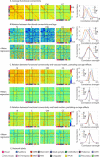
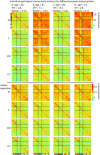
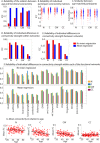

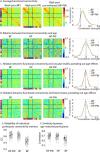


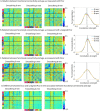


Similar articles
-
State and Trait Components of Functional Connectivity: Individual Differences Vary with Mental State.J Neurosci. 2015 Oct 14;35(41):13949-61. doi: 10.1523/JNEUROSCI.1324-15.2015. J Neurosci. 2015. PMID: 26468196 Free PMC article.
-
Extrinsic and Intrinsic Brain Network Connectivity Maintains Cognition across the Lifespan Despite Accelerated Decay of Regional Brain Activation.J Neurosci. 2016 Mar 16;36(11):3115-26. doi: 10.1523/JNEUROSCI.2733-15.2016. J Neurosci. 2016. PMID: 26985024 Free PMC article.
-
Intensity-based masking: A tool to improve functional connectivity results of resting-state fMRI.Hum Brain Mapp. 2016 Jul;37(7):2407-18. doi: 10.1002/hbm.23182. Epub 2016 Mar 28. Hum Brain Mapp. 2016. PMID: 27018565 Free PMC article.
-
Motion artifact in studies of functional connectivity: Characteristics and mitigation strategies.Hum Brain Mapp. 2019 May;40(7):2033-2051. doi: 10.1002/hbm.23665. Epub 2017 Nov 1. Hum Brain Mapp. 2019. PMID: 29091315 Free PMC article. Review.
-
Group comparisons: imaging the aging brain.Soc Cogn Affect Neurosci. 2008 Sep;3(3):290-7. doi: 10.1093/scan/nsn029. Soc Cogn Affect Neurosci. 2008. PMID: 18846241 Free PMC article. Review.
Cited by
-
Investigating robust associations between functional connectivity based on graph theory and general intelligence.Sci Rep. 2024 Jan 16;14(1):1368. doi: 10.1038/s41598-024-51333-y. Sci Rep. 2024. PMID: 38228689 Free PMC article.
-
The Effect of Aging on Resting State Connectivity of Predefined Networks in the Brain.Front Aging Neurosci. 2019 Sep 4;11:234. doi: 10.3389/fnagi.2019.00234. eCollection 2019. Front Aging Neurosci. 2019. PMID: 31555124 Free PMC article.
-
Longitudinal Changes in the Cerebral Cortex Functional Organization of Healthy Elderly.J Neurosci. 2019 Jul 10;39(28):5534-5550. doi: 10.1523/JNEUROSCI.1451-18.2019. Epub 2019 May 20. J Neurosci. 2019. PMID: 31109962 Free PMC article.
-
Functional connectome fingerprinting across the lifespan.Netw Neurosci. 2023 Oct 1;7(3):1206-1227. doi: 10.1162/netn_a_00320. eCollection 2023. Netw Neurosci. 2023. PMID: 37781144 Free PMC article.
-
Global signal regression strengthens association between resting-state functional connectivity and behavior.Neuroimage. 2019 Aug 1;196:126-141. doi: 10.1016/j.neuroimage.2019.04.016. Epub 2019 Apr 8. Neuroimage. 2019. PMID: 30974241 Free PMC article.
References
Publication types
MeSH terms
Grants and funding
LinkOut - more resources
Full Text Sources
Other Literature Sources
Medical

